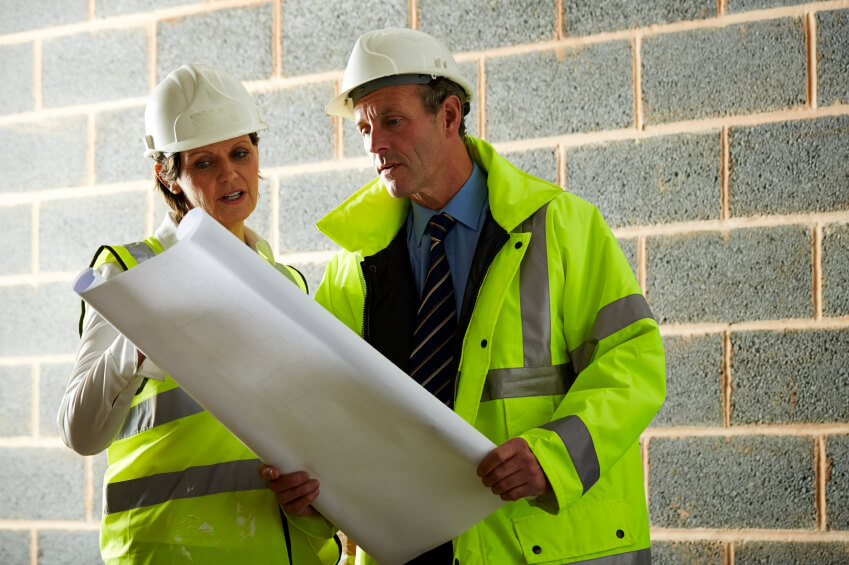HSE announces impending inspections of Asbestos In Schools. Are you making the most of your empty buildings to get your Asbestos compliance goals in check?
2 August 2022
Despite the import, supply and use of asbestos being banned since 1999 in the UK, Asbestos accounts for more deaths per year than road traffic accidents. 5,000 premature deaths per year are recorded related to asbestos exposure and asbestos related-diseases. The UK death rate for asbestos-related diseases continues to be the highest in the world.
The HSE has announced that it will be conducting inspections of schools from September after the holiday period in Scotland, England and Wales. The inspections will be assessing how schools are managing the risks from asbestos within the school estate and meeting the 'duty to manage' (DTM) requirements under Regulation 4 of the Control of Asbestos Regulations 2012 (CAR). In anticipation of these inspections, Head of Business Development Kim Johnson, with 12 years of experience within the asbestos industry, outlines how education settings can manage their asbestos hazards.
Thousands of schools built between the 1950s and 1985 where asbestos was used extensively in the construction of schools during this period, are particularly at risk.
The range of construction ages and types in this sector is vast, not to mention the various different types of Consortium of Local Authorities Special Programme (CLASP) buildings still occupied and used today. This makes it vitally important that experts in asbestos consultancy with an extensive range of specialist building knowledge within this sector, are engaged to accurately assess the risk within each premise individually depending upon the ages and build type.
Duty to manage asbestos
In 2012, the European Commission determined that British regulations didn’t fully implement its directive to limit asbestos exposure. As such, new legislation was drafted and the Control of Asbestos Regulations 2012 (CAR 2012) came into force on 6th April that year, aimed at providing a more efficient system of control.
The Control of Asbestos Regulations 2012, Regulation 4.8, (Duty to Manage) Asbestos, states that a determination of the risk from any asbestos known to be present is made. Moreover, “the regulation is designed to make sure anyone who carries out any work in non-domestic premises and any occupants of the premises are not exposed to asbestos from ACMs that may be present”.
This responsibility falls to the duty holder, which in many cases is the person or organisation that has clear responsibility for the maintenance or repair of the premises. In particular, the duty holder is required to assess and manage the risks from asbestos to employees and others, and must ensure that anyone who is likely to work on, or disturb, asbestos is provided with information about its location and condition.
Asbestos register and management plan
An asbestos register and asbestos management plan is required that incorporates all relevant information about the existence and location of any known or presumed asbestos-containing materials on school sites. The plan also needs to be updated regularly and to be made available to anyone visiting or working on a school site.
As part of this requirement an assessment of the risk associated with each identified occurrence of asbestos in the school, is required.
They must take into account the type of building material present and the type of asbestos it contains and a priority assessment of the likelihood of someone disturbing the material based on a number of factors. These include occupant activity, the likelihood of disturbance, frequency of use of an area and most importantly the level of planned or unplanned maintenance activity in the area.
Asbestos – properly managing the risks
The presence of asbestos in a school is a hazard, but the risk to the occupants is when the asbestos fibres become airborne and can be inhaled. An asbestos survey identifies the hazard, but on its own rarely identifies the risk present to an effective level; the key requirement is to target resources by properly assessing the risk present and controlling the real risks effectively.
There have been a number of reported cases in schools where air sampling has identified situations where asbestos fibres were being released into rooms, but without regular monitoring it is impossible to tell for how long this may have been taking place unnoticed.
For example, the impact of any release of fibres from classroom cupboards, slamming doors, damage to walls and columns or from heaters might only be properly identified by periodic air sampling.
Current asbestos management policy is largely based on identifying the hazard and managing the material; this is really hazardous material management rather than managing the risk of fibres being inhaled.
Outdated asbestos clearance limits?
In 1983 the Department for Education considered a proposal for an ‘environmental’ limit to be created specifically for schools. However, an environmental level has never been introduced and workplace clearance limits are instead still applied to classrooms.
The clearance indicator is intended to indicate that a working environment is notionally safe following asbestos removal works and is used as part of an in-depth post work assessment process called the ‘four stage clearance’ procedure.
The clearance indicator is defined by HSE as a transient indication of site cleanliness, in conjunction with the thorough visual inspection, and not as an acceptable, permanent environmental level.
In fact there are many that argue that, rather than a safe level, the clearance limit simply reflects the limits of quantification allowed by the measurement techniques available at the time it was introduced and does not take into account modern advances and improvements to sampling and analytical techniques.
In April 2022, the Work and Pensions Committee issued a report, ‘The Health and Safety Executive's Approach to Asbestos Management', strongly recommending that the HSE, as part of their upcoming review of the Control of Asbestos Regulations, current guidance and stringent control measures must be implemented in line with other European countries and invest in awareness campaigns as well as more regular audits and investigations of sites to ensure compliance.
The report states in section 8:
“The latest Control of Asbestos Regulations were introduced in April 2012 and apply to all non-domestic premises (including ‘common areas’ of certain domestic buildings), regardless of the nature of business or industry.28 They are made under the Health and Safety at Work etc Act 1974, address health risks and apply only in Great Britain. Northern Ireland and Gibraltar have separate legislation covering their territories.”
Unfortunately this week (1st August 2022) the Government and the HSE jointly announced that they will not be accepting these recommendations responding:
‘The Government could only advocate a proactive course of action in this area if there is compelling evidence that the, undoubted, increase in exposure to asbestos workers that will result from active removal, possibly prematurely, is justified in terms of reducing risk of exposure to building users. At present this evidence is not there’.
Charles Pickles, founder of the Airtight on Asbestos campaign and co-founder of Lucion Services, responded to the rejection stating:
"The recommendations put forward in the Work and Pensions report were both sensible and timely, and yet they have been almost completely rejected by Government. To put it bluntly, the UK has one of the worst asbestos legacies in the world – and our current lack of an informed strategy for dealing with this is shocking. For any project involving old buildings it will mean increased costs, delays, and even untimely deaths. Industry, campaigners, patient organisations and unions are united in their disappointment of this missed opportunity."
Asbestos removal or reassurance – finding the balance
Clearly nobody should be complacent about the risks associated with asbestos but limited financial resources mean it is unlikely to be feasible to remove all asbestos materials in the short term.
Rather than resorting to full removal of asbestos, modern air monitoring and analytical techniques provide the means to accurately measure any risks to occupants that might be present and enable the appropriate remedial actions to be taken. In the short and medium term the focus should therefore be on the improved management of asbestos in schools and other public buildings.
In this way, air sampling and analysis utilising powerful scanning electron microscopy can ratify the efficacy of existing asbestos management techniques and prove that asbestos fibres levels are not elevated, providing the reassurance needed that children and teachers are not being exposed to harmful fibre levels.
The reassurance provided by SEM for asbestos monitoring
The standard analysis of samples gathered from air monitoring provides quick results but it does not differentiate between asbestos fibres and other sorts of fibres that may be present such as clothing fibres. In this respect better thought out sampling strategies and air monitoring would significantly improve the current leak testing of asbestos enclosures and general reassurance testing.
The analysis of air filter samples using scanning electron microscopy (SEM) can be undertaken in much greater detail than is possible with standard techniques. SEM enables asbestos in air to be quantified to very low levels, typically achieving lower limits of detection to 0.0005 fibres/ cm3 and below, compared to the 0.01 fibres/cm3 capability of standard phase contrast microscopy (PCOM). SEM can also distinguish between different asbestos fibre types and other non-organic fibres.
As a result, SEM’s ability to more accurately determine whether asbestos fibres are present means it can better identify the level of any risk that might be present.
What should schools do to prepare for these inspections?
The HSE has outlined that, in advance of the inspections, schools may wish to review their current arrangements and check that they are meeting their duties under CAR, which includes requirements to:
- take reasonable steps to find out if there are asbestos-containing materials (ACMs) in the school premises, and if so, the amount, where it is and what condition it is in
- presume materials contain asbestos unless there is strong evidence that they do
- make, and keep up to date, a record of the location and condition of any ACMs - or materials which are presumed to contain asbestos
- assess the risk of anyone being exposed to fibres from the materials identified
- prepare an asbestos management plan (AMP) that sets out in detail how the risks from these materials will be managed
- take the necessary steps to put the plan into action
- periodically review and monitor the plan and the arrangements, and act on the findings, so the plan and arrangements remain relevant and up to date
- provide information on the location and condition of the materials to anyone who is liable to work on, or disturb them
How Lucion can help
We are the UK’s market leading, independent and impartial supplier of asbestos testing, inspection and management services. Providing UKAS accredited and certified scientific hazardous materials testing, inspection and environmental management solutions, we deliver our trusted services to schools, colleges and universities requiring regulatory compliance in their buildings and/or assets.
Our team has worked with many local authorities, independent schools and higher education facilities, who have seen the benefits of the innovative technology that Lucion provides to manage the risk of asbestos through:
- Advanced technology unique to Lucion with working practices that our clients typically require in this sector
- Flexibility to work outside normal working hours and the ability to respond efficiently to emergency situations
- Bi-annually DBS checked on-site employees, wearing photographic ID cards, in smart liveried uniforms and vehicles that make no direct reference to asbestos, to minimise any alarm
We can be the perfect partner in your journey to a safer environment for staff and pupils, managing the risk of asbestos safely within your estates and moving beyond compliance to best practice.
If you are looking to partner with an environmentally conscious, holistic environmental services supplier, get in touch with Kim Johnson, Head of Business Development at Lucion Services using the details below or click ‘Make an Enquiry’.
About The Author
Head of Business Development at Lucion Services, Kim Johnson, has earned nearly 12 years of experience within the environmental industry. Starting her career as an Asbestos Surveyor/analyst, Kim has gone from strength to strength, earning herself a reputation for taking the pain out of managing hazardous materials for our clients. In her role as Head of Business development, Kim leads a team of Business Development Managers and Executives, supporting them to effectively support our clients through the complex world of regulations and guidelines in hazardous material management.
Kim Johnson, Head of Business Development
E: kimberley.johnson@lucionservices.com
M: 07788315848
T: 0345 5040 303
Linkedin: Kim Johnson
Tool Box Talk: Asbestos Awareness
As part of Lucion’s Take Care Be Aware initiative, we actively take care of our health and safety responsibilities, with continuous awareness of our commitments to knowledge share and educate.
In doing so we have created a ‘toolbox talk’ on asbestos awareness to raise awareness of the hazards associated with asbestos-containing materials, enabling safety professionals to share knowledge and overall save the time and effort in producing them for you and your teams.
_2.png)
Download From NexGen
Asbestos Is Schools White Paper
With widespread concern over the potentially harmful effects of asbestos in schools, modern air sampling and analytical techniques have the ability to better protect the health and safety of teachers and pupils. There is no safe limit of asbestos for people to breathe and we want everyone with a responsibility for safety in our schools to better understand the situation.
The white paper has been designed to provide important information to those who manage asbestos in buildings, in particular those who are responsible for the maintenance of the property and teachers.
.png)
Download From NexGen
Asbestos Management Plan: 12 Step Checklist
Struggling to get started with your Asbestos Management Plan? Download our free 12 step AMP Checklist Guide and take the first step to safeguard your teams, contractors, and reputation.
No Sign-Up Required


 NexGen
NexGen












